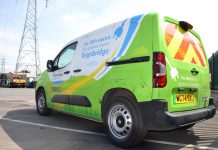When fleet managers are asked why their organisations haven’t yet made the switch to electric vehicles (EVs), many say they’re anxious about range.
However, while acknowledging the concern, ‘range anxiety’ is now much less of an issue. This article explains why advances in technology, rapidly falling costs and far greater levels of investment are all contributing to this change in mindset – right across the EV market.
The following points explain the reasons in more detail.
Better batteries
While early EVs only offered a short range between charges, newer models can go much further. The reason is simple: better batteries.
Some older batteries held less charge, and for less time, than newer ones – effectively limiting the distance EVs could travel between charges. Unless fleet managers chose batteries from the very top of the range, there was no way around this.
However, newer and bigger batteries have made ranges of 200 miles or more from a full charge the new normal. And as batteries continue to evolve, there’s no reason why we shouldn’t expect ranges between charges of 350 miles and more.
It’s interesting to note two separate developments in the world of motor sport. Firstly, the last two winners of the world’s toughest endurance motor race, ‘The 24 Hours of Le Mans’, have been powered by hybrid engines. Secondly, traditional ICE manufacturer Ferrari is reportedly building an electric supercar.
Short-distance driving
The majority of journeys taken are much shorter – at less than 10 miles in a day – than the uppermost range limit of the smaller EVs on the market. So, for most trips, there’s very little chance of an EV running out of charge.
The Drax Electric Vehicles team is committed to helping customers install and/or use charging points at as many destinations as possible. Potential locations include homes and workplaces, supermarkets, sports venues, retail parks, airports and hotels. Public EV charging points are coming online all the time, and it seems likely there’ll be standardisation around the ways drivers use and pay for fast charging. All these factors will help diminish range anxiety.
A wider electrification journey
Drivers, fleet managers and the rest of UK society is at the beginning of the journey towards e-mobility, with the options across all modes of transport increasingly attractive. For example, e-scooters and e-bikes are already popular in urban areas, allowing people to move quickly and efficiently without the associated emissions of ICE vehicle use.
As we continue to navigate towards an electrified transport network, the move to EVs falls into context. It may feel strange now, but in the future – the near future – EVs will be the norm. And organisations like yours won’t have to navigate the journey alone.
A helping hand, all the way
Changing to an EV fleet may seem like a major challenge – but there are partners who can help explore all the issues around switching to EVs. Drax are one of them.
They’ll guide you through every step of the journey, from gaining internal commitment for EVs to optimising your fleet. In fact, the business case for EVs is becoming harder to argue against. Running costs can be as low as 8p per mile, with petrol and diesel vehicles costing 13p per mile – and EVs also incur reduced National Insurance Contributions for businesses.
Drax has a team of EV and energy experts who can also advise you on the right infrastructure. This includes the types of charging points that best suit your operations, and the connections you need to have to your local Distribution Network Operator.
They’re actively helping their customers to make the switch, work with real-time telematics and use detailed data about their fleet and drivers. Join them and you’ll start reaping the environmental and financial benefits of EVs by reducing costs as well as carbon emissions.
To find out how they can help you, contact them today.



